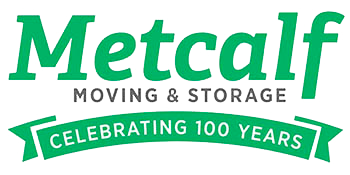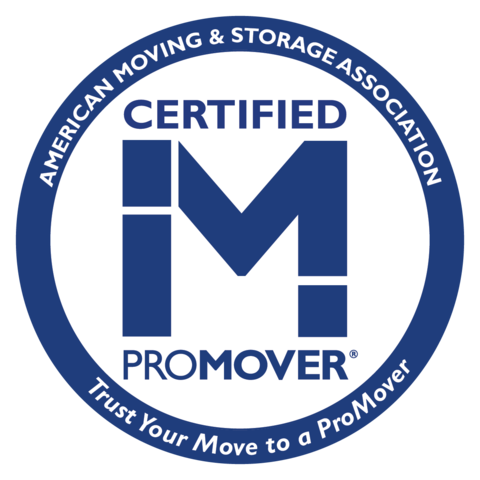METCALF MOVING BLOG
City Life vs. Suburban Life: Choosing Your Ideal Lifestyle
One of the most critical decisions when moving is whether to embrace the fast-paced energy of the city or the calm, open spaces of suburban life. Both options have unique advantages and possible drawbacks, and the choice often comes down to lifestyle preferences and priorities. Let’s explore what each environment offers so you can decide about your next residential move.
The Case for City Living
- Proximity to Work and Amenities
One of the most significant advantages of city life is convenience. Cities often have shorter commutes to workplaces and abundant access to essential services, such as healthcare, grocery stores, and public transportation. Living in the city can save time and reduce the need for a car, which appeals to many professionals. - Vibrant Social Scene
Cities are cultural hubs, offering diverse entertainment, dining, and nightlife. From museums and theaters to unique restaurants and live music venues, city dwellers can enjoy endless opportunities to explore and connect. City living might be the right fit if you thrive in an environment with constant activity and options. - Diverse Communities
Urban areas attract people from all walks of life, creating diverse neighborhoods rich in culture and experiences. This diversity can enhance personal growth and provide opportunities to network with like-minded individuals or meet people from different backgrounds.
The Suburban Advantage
- Space and Tranquility
Suburban neighborhoods typically offer more space, both indoors and outdoors. Larger homes, private yards, and quieter streets appeal to families or anyone looking for a more peaceful setting. The suburbs offer these perks if you enjoy gardening, outdoor activities, or simply having room to breathe. - Family-Friendly Environment
Suburbs are often designed with families in mind, boasting good schools, parks, and recreational facilities. Safety is a shared priority in suburban planning, and many neighborhoods have a strong sense of community that fosters connections among residents. - Affordable Living
While not universally true, suburban homes often provide more value for money than city real estate. Property taxes and daily expenses, like parking or dining, are typically lower in the suburbs, allowing for a more budget-friendly lifestyle.
Factors to Consider Before Deciding
- Commute Time
Living in the suburbs could mean a lengthy commute for those working in the city. On the other hand, if your work is remote or nearby, the trade-off of extra commuting time may be worth the added space and quiet suburban living provides. - Lifestyle Priorities
If you value social opportunities, nightlife, or walkability, city life is better suited to your needs. If your priorities are peace, community involvement, and outdoor activities, the suburbs will likely feel more like home. - Future Goals
When deciding, consider your long-term goals. Are you planning to start a family? Do you envision traveling often or settling into a neighborhood? Your future aspirations can guide your choice.
Finding Your Best Fit
Ultimately, deciding between city and suburban living comes from personal preferences and practical considerations. Consider your daily habits, long-term plans, and financial situation as you weigh the pros and cons of each lifestyle.
Knowing your priorities will help streamline decision-making and ensure your next home aligns with your goals and values if you’re planning a household move. A thoughtful approach to this choice will make your transition all the more rewarding.
Let us help with your move. Contact us today for more information and a free quote!
Finding Comfort in Change: Navigating the Moving Process
The Emotional Rollercoaster of Moving
Moving is more than transporting belongings—it’s a life-altering event that can stir emotions. The home you’ve known is not just a shelter; it’s a memory bank, a place brimming with the comfort and familiarity of years. These emotions can be overwhelming, but if addressed with care, they offer a valuable chance to grow and adapt. Here are some things to consider as you prepare for your household move.
Acknowledge Your Feelings
Denying emotions like sadness or anxiety leads to bottled-up stress, so it’s crucial to acknowledge these feelings. Allow yourself to grieve the loss of your old space. Give a heartfelt farewell to your home by organizing a small gathering with loved ones to share special memories. Take some time to walk through your house, revisiting memories in each room. These rituals offer closure and allow you to leave on a positive note.
Stay Organized to Maintain Balance
One effective way to manage emotional chaos is through organization. Create a detailed moving checklist, consolidating tasks into manageable chunks over weeks or days. Set realistic deadlines, and don’t hesitate to enlist help from friends or professionals when needed. This will reduce overwhelming feelings and make the process more manageable, giving you space to handle emotional upheavals.
Create Comfort Amidst Chaos
Even with the most organized relocation, chaos can ensue, so prioritize crafting a cozy, comforting space in your new location as soon as possible. Unpack sentimental items first to add a layer of familiarity and warmth. Transform a corner of your new home into a sanctuary with your favorite books, music, or plants. This retreat becomes a favored refuge where you can recharge amidst the upheaval.
Capture Memories, Then Let Go
Before moving, make deliberate efforts to capture memories of your old home. Whether through photographs or writing down cherished experiences, documenting these memories provides a sense of acknowledgment and gratitude. Once you’ve safely bottled your memories, practice letting go. Embrace this new chapter as a clean slate, ready for new stories, experiences, and relationships.
Maintain Connections
One of the most complex parts of moving is leaving behind familiar faces and networks. Combat loneliness by maintaining these connections through regular phone calls, video chats, or old-fashioned letter-writing. Get involved in local community groups or clubs in your new area—these connections will help ease the transition and instill a sense of belonging.
Embrace Change
Moving provides a unique opportunity for personal growth and exploration. Embrace this change by adopting a curious mindset and exploring your new area’s cultural or natural surroundings. Say yes to invitations and opportunities you might have hesitated about before. This open-hearted approach helps you integrate and enriches your life with fresh perspectives and friendships.
We can expertly manage every aspect of your move, from packing to logistics. Our attention to detail is unmatched. Metcalf is a trusted partner dedicated to a smooth and efficient transition. Contact us today for your free quote.
Moving to Rochester, MN: Thriving Community Small-Town Charm
Rochester, Minnesota, is more than just the home of the world-renowned Mayo Clinic. This vibrant city blends big-city amenities with the warmth of a small-town atmosphere, making it a top choice for families, professionals, and retirees. Whether you’re drawn by career opportunities, excellent schools, or the city’s inviting community feel, here’s what you need to know to make your move to Rochester as smooth as possible.
Explore the Neighborhoods
Rochester offers diverse neighborhoods to fit every lifestyle. If you’re seeking a lively atmosphere close to restaurants, shops, and cultural attractions, the downtown area might be your ideal choice. For families, suburban neighborhoods like Elton Hills or Meadow Park boast excellent schools, parks, and a sense of community. If you prefer a quieter, rural setting, areas on the city’s outskirts offer spacious properties and scenic views. Researching neighborhoods in advance can help you find the perfect fit for your needs.
Understand the Cost of Living
Rochester’s cost of living is relatively affordable compared to other cities with similar amenities. Housing prices are reasonable, and the city’s robust economy, driven by healthcare and technology, supports a high quality of life. Before your move, budget for housing, utilities, and other essentials to ensure a seamless transition. Websites like Numbeo can provide up-to-date cost comparisons.
Navigate Rochester’s Weather
Minnesota is known for its unmistakable seasons, and Rochester is no exception. Winters can be snowy and cold, while summers are warm and humid. Make sure your move accounts for seasonal weather. If you’re relocating in winter, hire professional movers equipped to handle icy driveways and heavy snowfall. Preparing for the weather ensures your move stays on track regardless of the season.
Get to Know Rochester’s Transportation Options
While Rochester is car-friendly, it also offers convenient public transportation through Rochester Public Transit (RPT). The city’s bike-friendly infrastructure is ideal for outdoor enthusiasts, and walking paths are plentiful if your commute is long. Research routes and transportation options ahead of time to streamline your daily travel.
Immerse Yourself in the Community
Rochester is rich in cultural and recreational opportunities. There’s something for everyone, from art exhibits at the Rochester Art Center to concerts at Mayo Civic Center. The city also boasts an extensive network of parks, trails, and sports facilities. After your move, consider attending local events or volunteering in the community to build connections and make Rochester feel like home.
Leverage Resources for Newcomers
Moving to a new city can feel daunting, but Rochester offers resources to ease the transition. Community organizations, like the Rochester Area Chamber of Commerce, provide relocation guides and networking opportunities. Additionally, online forums and social media groups for Rochester residents can help you find recommendations for everything from grocery stores to daycare providers.
Your New Chapter Starts Here
Moving to Rochester, MN, provides access to a community that thrives on innovation and connection. Planning your move carefully and embracing this city’s opportunities will make you feel at home in one of Minnesota’s most welcoming destinations. Start preparing today to enjoy all the benefits of living in this dynamic yet charming city.
Are you ready to move? Contact our team today to plan your move. We can relieve the stress of your relocation, allowing you to focus on appreciating your new home.
6 Practical Tips for Relocating with Your Pets
Moving is tricky, but relocating with pets introduces unique challenges. Careful planning can make a significant difference, from ensuring their comfort to navigating pet-specific logistics. Here are six practical tips to make a household relocation with your furry companions as stress-free as possible.
1. Plan for Pet Travel
Whether you’re moving across town or the country, organizing your pet’s transportation is critical. For long-distance moves, research pet-friendly airlines or car travel accommodations. Secure a comfortable carrier for your pet and ensure it’s familiar with it before the move. If you’re driving, plan for regular stops to allow your pet to stretch, eat, and hydrate.
2. Update Identification and Records
Before your move, update your pet’s identification tags and microchip information with your new address and phone number. This step is essential in case your pet becomes lost during the transition. Additionally, request copies of veterinary records and ensure all vaccinations are current. If you move to a new state or country, this paperwork might be required.
3. Pack a Pet Essentials Kit
During the chaos of moving day, easy access to your pet’s essentials is invaluable. Pack a bag with food, water, bowls, a leash, toys, and any medications your pet might need. Including a familiar blanket or item with your scent can also provide comfort. Having these items ready ensures your pet’s needs are met while your household belongings are in transit.
4. Protect Your Pet on Moving Day
Moving day can be hectic, with open doors and strangers coming in and out of your home. To avoid accidents or escapes, designate a quiet, secure space for your pet, such as a bathroom or a crate. Mark the door with a “Do Not Enter” sign to alert movers and helpers. Consider leaving your pet with a good friend or family member or boarding them for the day if possible.
5. Introduce Them to Your New Home Gradually
Once you land at your new home, introduce your pet to their new surroundings. Start with one room and expand their access as they become more comfortable. Set up their bedding, food, and water in a familiar arrangement to create a sense of stability. Be patient as they adjust—some pets might need a few days or weeks to feel at ease.
6. Research Local Pet Resources
After settling in, locate nearby veterinarians, pet supply stores, and parks. This ensures you’re prepared in emergencies and helps your pet adjust to the new community. Joining local pet groups can also provide valuable advice and connections to other pet owners in the area.
Make Moving Easier for You and Your Pets
Relocating with pets doesn’t have to be overwhelming. By planning ahead and prioritizing your pet’s needs, you can ensure a smooth transition for the entire family. Remember, your effort into your pet’s comfort will pay off in a happier and healthier adjustment to your new home.
Let us help you settle into your new home seamlessly. Our movers are efficient, quick, and professional. Contact us today for a free quote.
Family Adventure: Telling Your Kids About Your Move
Moving homes is a significant event in any family’s journey, often filled with excitement and anticipation. However, discussing the change with your children can be a daunting task. Here are some practical ways to help your kids understand and embrace this new adventure.
Prepare for the Conversation
Before you sit down with your children, ensure you have all the information about your household move. Schools, neighborhoods, timelines—having these details will allow you to answer any questions confidently. Children feel more secure when they see you have a clear plan.
Choose the Right Time
Select a time when your family is relaxed and undistracted. Avoid beginning the conversation during a hectic time, like right before school or dinner. Instead, choose a moment everyone can focus—perhaps over a weekend breakfast. This helps show your children that the discussion is important and that they have your full attention.
Explain Genuinely
Communicating openly without overloading your children with information is essential. Tailor your explanation to suit their level of understanding and stress both the practical reasons and the potential benefits of the move. Children appreciate honesty, and understanding the ‘why’ can help them process the change.
Encourage Questions
Create an inviting atmosphere for any questions they might have. Encourage them to voice any concerns or questions, no matter how small. By listening attentively and responding empathetically, you validate their feelings and start a constructive dialogue.
Foster Excitement
Turn any anxieties into excitement by discussing the fun aspects of moving, like decorating their new room or exploring a new neighborhood. Depending on their age, children may also appreciate being involved in planning the layout of their new space or investigating new school or community activities.
Keep the Dialogue Open
Revisit the conversation regularly. Open dialogues keep your children in the loop and let them express new feelings as the moving date approaches. Ensure they know it’s normal to have mixed emotions and that they can talk to you whenever needed.
Make It a Family Experience
Frame the move as a family adventure. Engage your children in packing, or give them a small responsibility in the moving process. Encourage them to help with tasks like packing a special ‘overnight bag‘ for the first night in your new home.
Visualize the Transition
Pictures and maps help them visualize their new home and its surroundings. Pictures of local parks, their new school, or fun landmarks can create a sense of familiarity. Visit the new area as a family for a day trip to explore ahead of time.
Plan Farewells and New Beginnings
Organize activities for saying goodbye, like a small farewell party with friends or a memory book of favorite local spots. At the same time, talk about the adventure of making new friends and exploring new places, which can bring a sense of balanced closure.
Cherish the Connection
Remind your children that the family bond remains constant while the location might change. Reinforce the idea that your home isn’t just a physical space but wherever the family is together. Such undertones help reassure them during the transition.
Moving Beyond Stress
Remember, moving is a transition for the entire family. Acknowledge it’s a process that begins with understanding each family member’s perspective. Tailor the approach for each child and appreciate their unique way of dealing with change. Making moving an inclusive journey helps create cherished memories from this pivotal life change.
We can help with the planning, packing, and heavy lifting. Let us take the load off. Contact us today for a free quote.
Cozy and Creative Indoor Winter Fun in Rochester, MN
Winter in Rochester, MN, might whisper chill and snow, but excitement remains high indoors. For newcomers moving to Rochester, MN, settling down and finding engaging activities during the frosty months can make all the difference. Here’s a roundup of some delightful and intriguing indoor pursuits you and your family can embrace when the temperature dips.
Explore Local Museums
The Rochester Art Center is perfect for those moments when we seek solace in creativity. It’s not just about gazing at art — workshops and events invite you to unleash your inner artist. The History Center of Olmsted County offers a peek into the past with its compelling exhibits and archives for a deeper dive into local history.
Embrace the Escape Room Challenge
Feeling adventurous? Gather a group of friends or family and head to an escape room. These challenging puzzles will test your wit and teamwork skills. Rochester has several spots for themed adventures that blend mystery with brain-teasing fun. Block off an afternoon for a session at Unraveled Escape Room, and let the games begin!
Cherish Book and Coffee Spots
If a slow-paced morning sounds like your cup of tea, Rochester’s cozy cafes and bookshops are calling your name. Settle into a plush seat at Nordic Flame or Bookstore Cafe, mingling pages of a gripping novel with the wafting aroma of freshly brewed coffee. It’s also a great way to meet fellow book lovers or join a reading group.
Unwind at the Indoor Recreation Centers
Indulge in some active fun at Rochester’s indoor recreation spots. The YMCA offers various activities, from swimming in heated indoor pools to playing basketball or taking yoga classes. Meanwhile, Bowlocity Entertainment Center gives the whole family a fun day out with its bowling lanes, arcade games, and laser tag arena.
Indulge in Culinary Classes
Winter months are perfect for honing new skills, especially in the kitchen. Culinary classes at local schools allow you to whip up delightful dishes, from baking artisan bread to mastering traditional Minnesotan cuisines. Join a class, commit to experimenting with flavors, and mix learning with laughter with fellow food enthusiasts.
Take the Stage
For those with a flair for the dramatic, the local theater scene is rich and accessible. Check out auditions at places such as the Rochester Repertory Theatre or Civic Theatre. Not only do these venues showcase classic and contemporary plays, but they also offer workshops in acting and improv. Whether on the stage or enjoying from the seats, the performing arts can warm up the coldest nights.
Educating and Engaging the Little Ones
The Minnesota Children’s Museum Rochester is a must-visit for families with kids. With interactive exhibits and special programs, children can learn while they play. It’s an environment that inspires curiosity and fosters creativity. Make a monthly trip, and see how it becomes a favorite outing for your children.
Look Forward to New Adventures
New residents of Rochester will find winter exciting, with many indoor activities to participate in. Embrace the chill and discover opportunities that bring warmth to your heart and home.
Contact us for help with your move. We can make it stress-free!
Seamless Corporate Relocation: Moving with Family
In today’s globally connected world, job relocation is often part of one’s career progression. While it presents exciting opportunities for professional growth, it can also be a complex process involving moving your family. Here, we delve into practical tips to ensure a smoother transition, including packing boxes and easing transitions for every household member.
Plan Ahead with a Family Checklist
Preparation is vital when it comes to relocating successfully with your family. Begin with a comprehensive checklist. List essential tasks such as securing accommodation, finding schools, transferring healthcare, and updating family and professional contacts. A timeline helps keep everyone on track and reduces moving day chaos. Involve the whole family in planning to address each member’s concerns.
Research Your New Community
Adapting to a new community is one of the most significant aspects of relocating. Conduct thorough research to understand what your new community offers. Look for family-friendly neighborhoods, recreational activities, and community events that your family can enjoy. Joining local online groups or forums can provide insights and make you feel connected before you even arrive.
Address Education and Childcare Needs Early
Education and childcare are significant concerns for parents during relocation. Once you know where you’re moving, begin exploring schooling and childcare options. Visit potential schools and meet with educators to address any curriculum differences. For childcare, consider recommendations from trusted local sources. Ensuring these factors are settled before the move will make the transition more comfortable for your children.
Keep Communication Open
Relocation can be overwhelming for children and partners alike. Keeping an open line of communication is vital. Encourage family discussions about the move, share updates, and listen to everyone’s feelings. Addressing concerns as they arise helps ease anxieties and fosters a supportive environment. Remember, a move impacts every family member differently, and understanding those emotions is essential in creating a positive relocation experience.
Cultivate a Sense of Adventure
Relocating to a new place is, at its heart, an adventure. Turn the move into a fun exploration by creating a family bucket list of things you want to do or see in the new area. This positive outlook can help shift any apprehensions into excitement and foster a collective sense of curiosity and optimism about the change. Exploring together also strengthens family bonds during what can be a stressful period.
Cost Management: Save and Spend Wisely
Relocation involves expenses such as moving services, travel, and setting up a new home. Mitigating these costs requires sound budgeting. If your company offers relocation assistance, take full advantage of this resource. Shop for moving companies and get multiple quotes for the best deal. Keep a close tab on expenses during this period to avoid unnecessary financial strain.
Reconnect with a New Routine
After the move, establishing a new routine can bring a sense of normalcy to the chaos. Settle into work, school, and family activities as soon as possible. Allow time for everyone to adjust, and remain flexible as you discover what works best in your new setting. Bringing familiar elements from your previous lifestyle into your new home can also be reassuring.
Your Adventure Awaits!
Relocating with a family doesn’t have to be overwhelming. By planning meticulously, staying connected, and viewing change as an opportunity for growth, you can transform what feels like a daunting task into a rewarding family journey. Embrace the change, and remember, your adventure awaits!
Leave the packing, loading, and unloading to us so you can focus on the family. We make moving stress-free.
Embrace Outdoor Winter Fun in Rochester, MN
Rochester, Minnesota, becomes a magical place during the winter months, offering plenty of outdoor activities for residents to enjoy. Whether you’re planning to move to Rochester, are new to town, or have been here for years, there are countless ways to make the most of the season. From snowy trails to family-friendly festivals, here are some great options to embrace winter in Rochester, MN.
Hit the Trails at Quarry Hill Nature Center
Quarry Hill Nature Center is a favorite spot for locals, especially in winter. The snow-covered trails are perfect for snowshoeing or cross-country skiing, offering peaceful views of the woods and frozen ponds. If you’re trying these activities for the first time, you can rent gear at the center and get a few tips to get started. After a day outdoors, a thermos of hot cocoa and the quiet beauty of the park make for a relaxing finish.
Skate Under the Stars at Soldiers Field Park
If ice skating is more your style, Soldiers Field Park has a great outdoor rink open all winter. Whether you’re learning to skate or just looking for a fun afternoon, this rink is a go-to spot. With twinkling lights and a lively atmosphere, it’s perfect for a family outing or a casual evening with friends.
Skiing and Snowboarding at Coffee Mill
A short drive from Rochester, MN, the Coffee Mill Ski Area in Wabasha is the place for downhill skiing and snowboarding. The slopes cater to everyone, from beginners to seasoned skiers. Check out the tubing hill for a different kind of thrill—it’s a hit with kids and adults alike. Equipment rentals and lessons make starting easy, even if you’re new to the sport.
Explore Snowmobile Trails
Rochester is surrounded by a network of well-maintained snowmobile trails that wind through scenic fields and forests. The Southeast Minnesota trail system is a favorite for snowmobiling enthusiasts and offers a great way to take in the landscape during winter. Before heading out, check trail conditions and make sure you have the necessary permits.
Celebrate at WinterFest
WinterFest is one of Rochester’s highlights, bringing people together for two weeks of events and activities. From sledding to ice sculpture contests, there’s something for everyone. Many events also raise funds for local charities, so it’s a chance to have fun while giving back to the community. Check the schedule so you don’t miss out on your favorite events.
Enjoy the Quiet at Silver Lake Park
Silver Lake Park offers a peaceful retreat in the middle of winter. Its paths are ideal for a relaxing walk, and the geese that stay year-round add to the charm. It’s a great spot for unwinding after a busy week or enjoying fresh air without venturing far from home.
Get Involved with Local Groups
Joining a winter sports or activity group is a great way to meet people and learn more about the area if you are moving to Rochester, MN. Look for clubs focused on skiing, snowshoeing, or even photography. These groups often welcome new members and can introduce you to the best spots around town. Plus, it’s fun to stay active while connecting with your new community.
Discover Rochester’s Winter Charm
Winter in Rochester, MN, offers something for everyone, from quiet moments in nature to festive community events. Bundle up and make the most of what winter in Rochester provides—you might just discover a new favorite pastime.
If you are planning a move and need assistance, we can help. Contact us for a free quote.
Step Up Your Solo Moving Game
Moving to a new place can feel like an exciting, fresh start, an overwhelming ordeal, or both. Are you doing it alone? That adds an extra layer of challenge. But, with the right strategies, you can manage the process independently and come out on top. Here’s how to make your DIY move successful, from start to finish.
Planning Makes Perfect
The success of any move starts with planning. Begin by creating a detailed checklist that includes everything from changing your address to setting up utilities at your new home. Determine a timeline for each task, working backward from your move-out date. It helps prioritize functions that can be done well in advance, like decluttering, and reserve the last few days for packing essentials you’ll need up until your move.
Declutter Early and Often
Moving is the perfect excuse to clean house and part ways with items you no longer need. As you go through your belongings to declutter, categorize them into keep, donate, and discard piles. Tackle one room at a time to avoid overwhelm. You can host a garage sale or use online marketplaces to earn extra cash from items in good condition. Less stuff means fewer things to pack and transport, making your move more straightforward.
Packing Like a Pro
Packing can be daunting, especially when you’re going it alone. Start with the least-used rooms and items. Stock up on moving supplies like moving cartons, packing tape, and protective materials like bubble wrap and a lot of packing paper. Make sure to label each moving carton with its contents and the room where it should go in your new home. This will make unpacking more manageable and more organized. Consider color-coding boxes with stickers for a quick visual reference. Don’t neglect a “first-day essentials” box containing everything you’ll need immediately, like toiletries, basic kitchen items, and a change of clothes.
Transportation Tactics
You must think smart about moving your belongings without a team to assist. If you’re using a truck rental, ensure it’s the right size for your needs. Too small, and you’ll be stuck making multiple trips; too large, and you’re wasting money on unused space. Load heavier items first to maintain balance and utilize tie-downs to secure the payload. If renting a truck sounds daunting, consider portable moving containers or look into a delivery service for larger items.
Stay Safe and Check Your Limits
Moving heavy furniture and boxes is exhausting; it can be hazardous if done improperly. Lift with your legs, not your back, and don’t forget to bend your knees. If specific tasks exceed your capacity, such as transporting bulky furniture, it’s worth investing in professional movers for those specific items. Remember, saving time and avoiding injury can be worth the extra cost.
Your Move, Your Pace
Lastly, pace yourself. Moving alone offers you the liberty to do things on your timeline. Take breaks when needed and reward yourself for ticking tasks off that checklist. A solo move is as much about managing logistics as it is about looking after your well-being.
Discover the Freedom of Solo Moves!
While daunting, moving by yourself can also be quite liberating. It challenges you to be resourceful and organized while allowing you to dictate the pace and order of things. You’re equipped and ready to embrace the physical move and the transition into the next exciting chapter of your life. So take a deep breath, trust your plan, and get moving! Check out our moving resources for assistance.
Smart Box Labeling Techniques for a Stress-Free Move
Relocating to a new home is a blend of adventure and chaos. One key element that often dictates the ease of your move is the organization level, especially when labeling your boxes. Slapping on a vague sticker won’t cut it if you want to settle into your new place without pulling your hair out trying to find essentials like your toothbrush or coffee maker. Here are some efficient and practical methods to label your boxes, ensuring a smooth move to your new home.
Start with a Clear Labeling System
A well-established labeling system is your best friend during a household move. Begin by creating a list of categories (like kitchen, bathroom, and bedroom) and assigning each category a color. Purchase colored packing tapes or labels to match these categories. As you pack, each box should be labeled with the room it belongs to in the assigned color. This way, when you arrive at your new home, it’s quick and easy for you and the movers to know where everything goes.
Be Specific and Detailed
Keeping labels simple with just the room name is tempting, but take it further by listing essential items inside. For instance, instead of only labeling a box “Kitchen,” add “Kettle, Toaster, Mugs.” This practice helps unpack essential items first and prevents the hassle of opening multiple boxes to find what you need.
Use a Numbering System
Incorporating a numbering system into your labeling strategy can revolutionize your moving process. Assign each box a unique number and keep a master inventory list with corresponding numbers and contents. This system allows you to keep track of every box and its contents efficiently. If you’re curious about where your casserole dish is, simply check the list and locate the exact box.
Go Digital
Leverage technology to ease your move. Apps like Sortly or Moving Van help you create a visual catalog of your belongings, such as photos and details tied to your labeled boxes. This digital backup adds an extra layer of security and is invaluable if any boxes are lost or misplaced during the move.
Protecting Fragile Items
For boxes containing delicate items, use bold markers to flag them as “Fragile” with large, visible text on multiple sides of the box. This will grab attention and prompt gentle handling. AAdd”This Way Up” arrows to ensure boxes are carried and placed correctly, minimizing the risk of damage during transit.
Involve the Whole Family
If you’re moving with family, get everyone involved. Assign each person a different color label for their boxes. This personalized touch can make packing fun and let each family member take responsibility for their items, reducing stress and creating a team atmosphere.
Last Box, First Priority
Label one or two boxes as “Open First” or “Essentials Box” with crucial items like cleaning supplies, essential toiletries, and basic kitchen utensils. These lifesaving contents will help you navigate the chaotic first day in a new home without tearing into multiple boxes.
Unlock the Secrets to a Breezy Move!
Labeling boxes with these insightful tips can dramatically impact the efficiency and enjoyment of your moving experience. Take the time to establish a coherent system and involve your entire household in the process. You might even enjoy organizing a move as much as settling into your sparkling new abode. So grab those markers and labels, and set the stage for a stress-free move!
Let us help you get there. We can help you plan and execute your upcoming residential move. Contact us for a quote.












